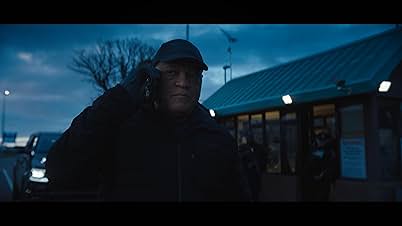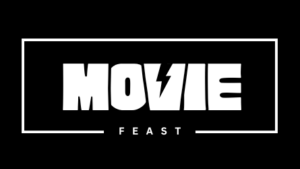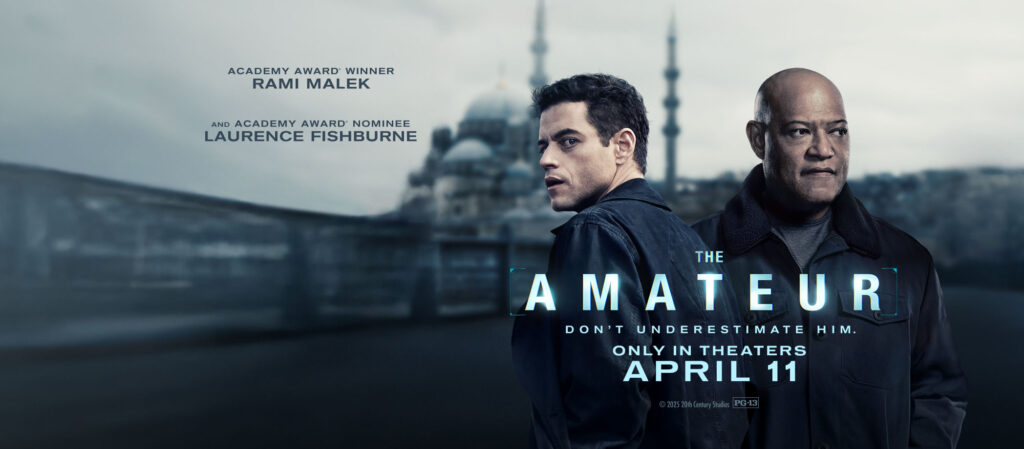The The Amateur review reveals why this 2025 action thriller delivers genuine tension and emotional weight. James Hawes’ focused direction transforms familiar revenge territory into something genuinely gripping and emotionally resonant.
What happens when you combine the isolation of grief with the most dangerous quest for justice? You get espionage thriller perfection. The Amateur (2025), directed by James Hawes, stands as one of the most compelling revenge dramas in recent action film history. This intense thriller follows a CIA cryptographer whose peaceful life is shattered when his wife is killed in a London terrorist attack, forcing him to take matters into his own hands when his supervisors refuse to act. While the film operates on familiar revenge thriller territory, it succeeds because it never exploits its premise—every moment of tension and character development is handled with complete emotional authenticity.

Synopsis
Charlie Heller, a brilliant but deeply introverted CIA cryptographer, works quietly in the basement offices of Langley, content with his analytical work and loving marriage to Sarah. His ordered world collapses when Sarah is killed in a terrorist attack while on a business trip to London. Devastated and seeking answers, Charlie approaches his CIA supervisors demanding action against those responsible for his wife’s murder.
When the agency refuses to pursue justice, citing political complications and operational priorities, Charlie makes a desperate decision. Despite having no field training or combat experience, he uses his intelligence skills and access to classified information to launch his own mission of revenge. The film follows his transformation from grieving widower to determined amateur operative willing to risk everything to honor his wife’s memory.

Plot & Themes
The Amateur operates on a deceptively complex premise: sometimes the most profound courage comes from ordinary people pushed beyond their breaking point. The CIA setting serves as both professional backdrop and metaphor for exploring deeper questions about justice, loyalty, and the courage to act when institutions fail us.
The film’s genius lies in its careful balance between action elements and character development. When Charlie faces his limitations and fears while pursuing his dangerous mission, the movie never treats his internal struggles as secondary to the thrills. These moments work because Hawes understands that true suspense comes from emotional investment in the character’s impossible journey.
Thematically, the movie explores how grief can transform into purpose and how love can drive ordinary people to extraordinary acts. Charlie’s quest isn’t just about revenge—it’s about discovering that sometimes the system’s failures demand individual action, no matter the personal cost.

Cinematography & Visuals
The cinematography captures the sterile world of intelligence work with visual techniques that serve both the action and emotional elements perfectly. The visual style emphasizes the contrast between Charlie’s quiet analytical life and the violent world he must enter, using muted colors and precise framing to create mounting tension while highlighting his fish-out-of-water vulnerability.
The film excels in building suspense through environmental storytelling. The sequences showing Charlie’s amateur attempts at fieldwork demonstrate excellent use of realistic locations and practical action. The camera work holds on meaningful moments of fear and determination just long enough to create genuine emotional investment.
Technical details reward careful viewing. During espionage sequences, attentive viewers will notice how Charlie’s growing desperation and improvised methods contrast sharply with professional operative behavior, emphasizing his dangerous amateur status.
Acting & Characters
Rami Malek delivers a compelling performance as Charlie Heller, anchoring the film with his portrayal of a man finding dangerous courage he never knew he possessed. His character arc from quiet analyst to determined vigilante feels authentic and earned rather than forced. Malek brings both intellectual intensity and physical vulnerability to the role.
Rachel Brosnahan provides excellent support as Sarah, bringing warmth and authenticity to their relationship that makes her loss genuinely devastating. Her chemistry with Malek creates believable love that justifies Charlie’s extreme actions.
Laurence Fishburne rounds out the core cast with a performance that balances institutional authority with human understanding. His scenes during Charlie’s desperate appeals demonstrate both professional constraints and personal sympathy.
The supporting cast, including Caitríona Balfe, Michael Stuhlbarg, and Holt McCallany, brings authenticity without falling into stereotype, creating believable CIA operatives and antagonists that serve the story rather than overwhelming it.
Direction & Screenplay
James Hawes’ direction maintains perfect tension throughout the film’s runtime. Coming from his experience with prestige television, Hawes understood that revenge films require careful pacing that builds suspense without sacrificing character development. Every revelation and action sequence is given space to resonate emotionally.
The screenplay by Ken Nolan and Gary Spinelli layers tension at multiple levels:
- Character development that explores grief and transformation authentically
- Espionage elements that feel researched rather than fantastical
- Action components that build naturally from Charlie’s amateur status
- Emotional beats that never feel manipulative or forced
The script’s structure follows thriller conventions while subverting them through genuine character limitations. This creates familiarity that makes the unexpected moments of resourcefulness and determination land with greater impact.
Sound & Music
The film’s score perfectly balances quiet analytical work with underlying danger to create an audio landscape that mirrors Charlie’s psychological journey. The music enhances rather than overwhelms the natural tension of his increasingly perilous situation.
Sound design plays a crucial role in building suspense. The way office sounds shift from comforting routine to oppressive reminders of inaction, and how Charlie’s breathing becomes more labored as danger increases, creates an immersive experience that places viewers directly into his desperate mission.
The use of silence deserves particular recognition. Key moments of grief and resolve are allowed to breathe without musical manipulation, trusting audiences to connect with Charlie’s emotional reality through performance alone.
Conclusion & Verdict
The Amateur succeeds because it treats its revenge premise with emotional intelligence and respect for both its protagonist’s limitations and the audience’s capacity for complex emotions. Every element—from performance to cinematography to sound design—works in service of both suspense and character development without sacrificing either.
Strengths:
- Exceptional lead performance that creates believable amateur heroism under impossible pressure
- Authentic espionage elements that feel researched and grounded
- Excellent pacing that builds tension while maintaining character focus
- Thoughtful exploration of grief and justice through action rather than exposition
Minor Weaknesses:
- Some action elements feel slightly predictable for the genre
- Occasional pacing issues in the middle section slow momentum briefly
This film remains essential viewing for thriller fans and anyone who appreciates character-driven revenge stories. The Amateur works for audiences who enjoyed Taken, John Wick, or The Equalizer.
Rating: 8.0/10
Director: James Hawes
MPAA Rating: PG-13 (for some strong violence and language)
Starring: Rami Malek, Rachel Brosnahan, Laurence Fishburne, Caitríona Balfe
For more action reviews, check out our analysis of other espionage thrillers. You can also explore the film’s production details at the Internet Movie Database.


